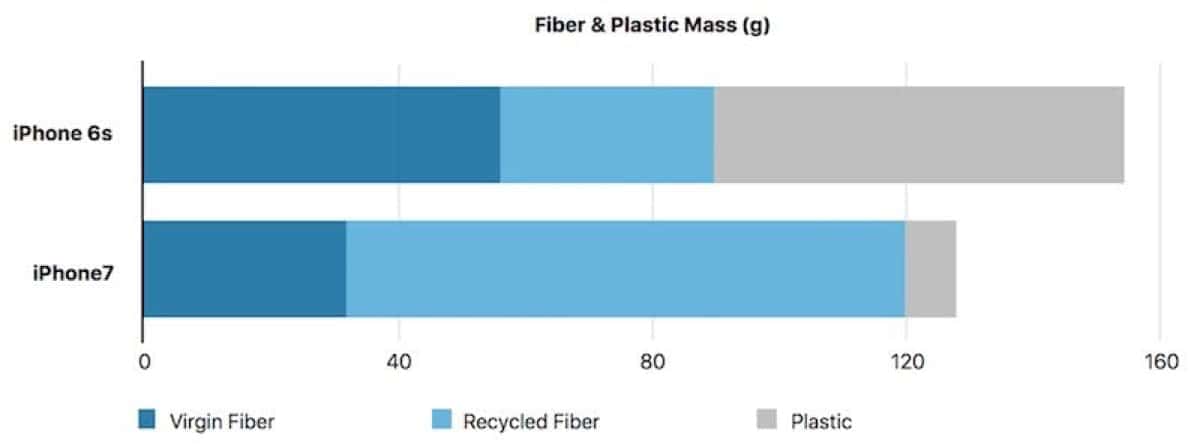Apple released a white paper [PDF] today detailing its strategy around paper use and iPhone packaging. Three priorities guide Apple’s environmental efforts when it sources environmental materials. The company is sharing its strategy in the hopes that other companies—in tech and beyond—will copy its green stance (via MacRumors).
Guidelines
Apple keeps three priorities in mind as it tries to protect the environment:
- Reduce impact on climate change by using renewable energy sources and driving energy efficiency in products and facilities.
-
Conserve precious resources by using materials efficiently, using more recycled and renewable content in products, and recovering material from products at the end of their life.
-
Identify, develop, and utilize safer materials in products and processes.
The company worked on creating more efficient iPhone packaging. A chart from the paper shows that compares the packaging of the iPhone 6s and iPhone 7. The iPhone 7’s packaging cut plastic use, and uses more virgin fiber and recycled fiber from trees (up to 30%).

Forest Conservation
Apple works to protect and expand the number of sustainable forests it uses for iPhone packaging. In the United States, it partnered with The Conservation Fund and used their Working Forest Fund model. This attempts to decrease forest-based supply chain risks and tries to stop the loss of private forests used for products, which are known as working forests.
The Conservation Fund identifies and buys working forests threatened by development or fragmentation. It then puts a conservation easement on the land. This is a legal agreement between a landowner and a land trust or government agency. The easement permanently limits the uses of the land in order to protect it for conservation.

The Fund then transfers the easement to a good partner, reinvesting the funds from the sale to protect more working forests. This boosts local economies to create jobs, as well as a supply of sustainable forest products. Since 2015 Apple and The Conservation Fund have protected over 36,000 acres of working forest, such as Brunswick Forest in North Carolina and Reed Forest in Maine.